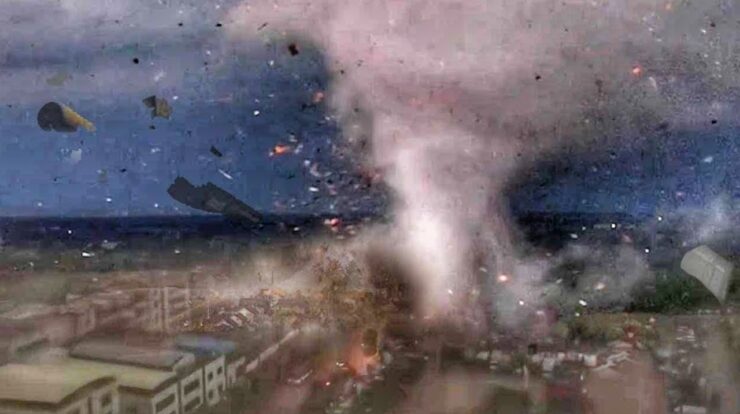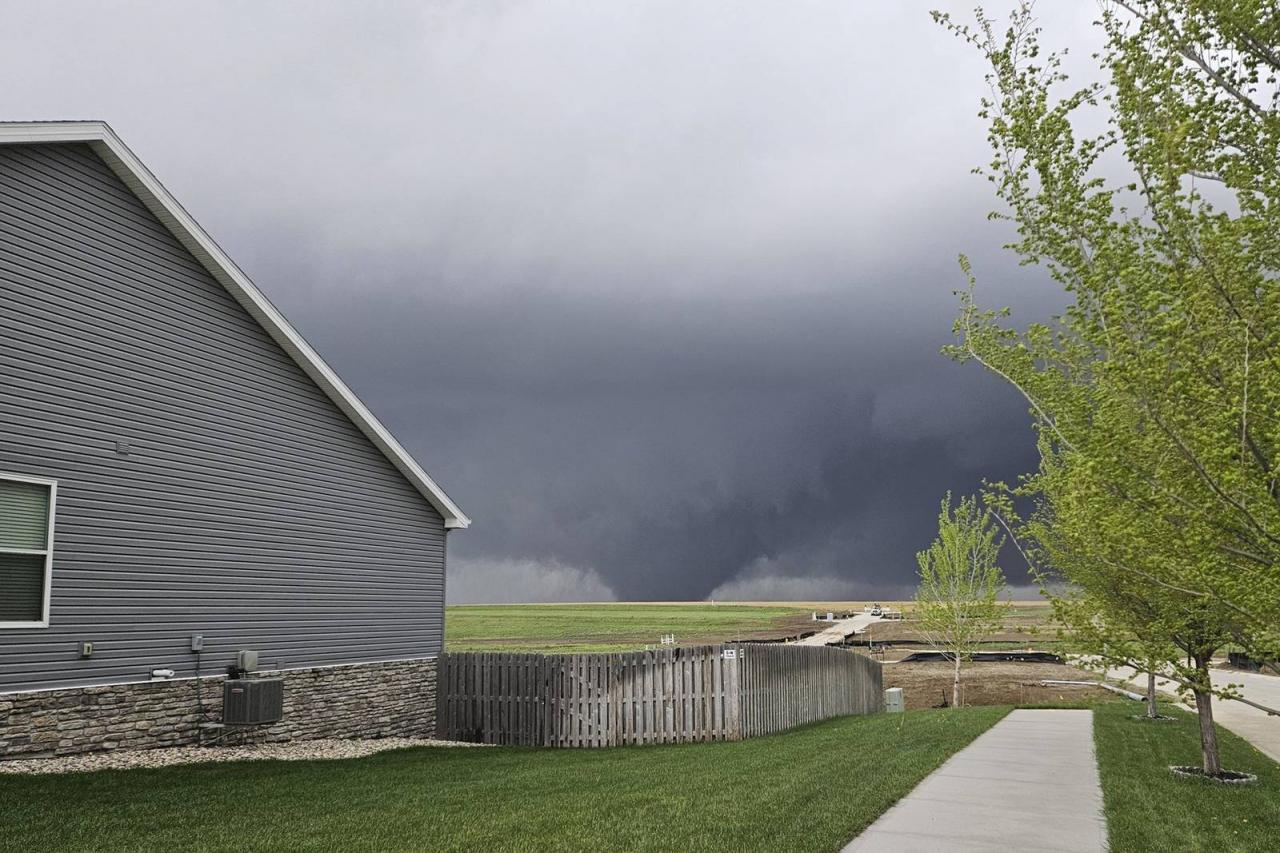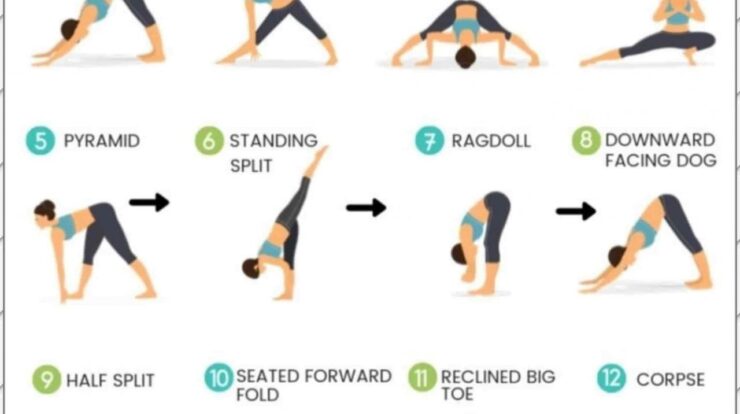
Tornadoes in Nebraska today pose a significant threat to life and property, making it crucial to understand their history, climatology, forecasting, safety measures, and research efforts. This article delves into these aspects, providing a comprehensive overview of tornadoes in Nebraska.
With a rich history of tornado activity, Nebraska experiences frequent and intense tornadoes, particularly during the spring and summer months. Understanding the meteorological factors that contribute to their formation, such as strong updrafts and wind shear, is essential for effective forecasting and warning systems.
Tornado History in Nebraska
Nebraska has a long and storied history with tornadoes, with the first recorded tornado occurring in 1858. Since then, the state has experienced numerous tornadoes of varying intensity, including several devastating events that have caused significant loss of life and property damage.
Tornado Frequency and Intensity
Nebraska is located in the central United States, within the “Tornado Alley” region, which is known for its high frequency of tornadoes. On average, Nebraska experiences around 50 tornadoes per year, with the majority occurring during the spring and summer months.
The intensity of tornadoes in Nebraska can vary significantly, with some tornadoes reaching EF5 status, the highest level on the Enhanced Fujita Scale. However, most tornadoes in Nebraska are EF0 or EF1, causing relatively minor damage.
Geographical Distribution
Tornadoes can occur anywhere in Nebraska, but they are most common in the eastern and central parts of the state. The Omaha-Lincoln metropolitan area is particularly vulnerable to tornadoes, as it is located in the path of several major storm tracks.
Tornado Climatology in Nebraska

The meteorological factors that contribute to tornado formation in Nebraska include:
- Warm, moist air:Nebraska’s climate is characterized by warm, humid summers, which provide the necessary moisture for tornado development.
- Dryline:The dryline is a boundary between moist air from the Gulf of Mexico and dry air from the Rocky Mountains. When the dryline moves into Nebraska, it can create a zone of instability that is favorable for tornado formation.
- Upper-level winds:Strong upper-level winds can help to create the rotating updrafts that are necessary for tornado formation.
Seasonal and Diurnal Patterns, Tornadoes in nebraska today
Tornadoes in Nebraska are most common during the spring and summer months, with the peak season occurring in May and June. Tornadoes can occur at any time of day, but they are most likely to occur in the late afternoon and evening.
Tornado Size, Path Length, and Damage Potential
The size, path length, and damage potential of tornadoes in Nebraska can vary significantly. Most tornadoes are relatively small, with diameters of less than 1 mile. However, some tornadoes can be much larger, with diameters of several miles. The path length of tornadoes can also vary, with some tornadoes traveling only a few miles while others can travel for hundreds of miles.
The damage potential of tornadoes is determined by a number of factors, including the size of the tornado, the path length, and the type of structures in the path of the tornado. Tornadoes can cause significant damage to buildings, infrastructure, and agriculture.
Tornado Forecasting and Warning Systems

The National Weather Service (NWS) is responsible for issuing tornado warnings in Nebraska. The NWS uses a variety of methods to forecast and issue tornado warnings, including:
- Weather radar:Weather radar can detect the rotation in the atmosphere that is associated with tornadoes. The NWS uses radar to track tornadoes and issue warnings when necessary.
- Spotter networks:Spotter networks are groups of trained volunteers who report tornadoes and other severe weather events to the NWS. The NWS uses this information to issue warnings and to track the progress of tornadoes.
- Other technologies:The NWS also uses other technologies, such as satellite imagery and lightning data, to forecast and issue tornado warnings.
Warning Dissemination Process
When the NWS issues a tornado warning, it is disseminated to the public through a variety of channels, including:
- Television and radio:Tornado warnings are broadcast on television and radio stations. The NWS also has a network of NOAA Weather Radio stations that broadcast tornado warnings.
- Cell phones:Tornado warnings can be sent to cell phones through the Wireless Emergency Alerts (WEA) system.
- Social media:The NWS uses social media to disseminate tornado warnings and other severe weather information.
Tornado Safety and Preparedness
There are a number of things you can do to stay safe before, during, and after a tornado:
Before a Tornado
- Have a tornado preparedness plan:Your plan should include a safe place to go, an evacuation route, and a way to communicate with family members.
- Identify a safe place to go:The best place to go during a tornado is a basement or underground shelter. If you do not have a basement, go to the lowest level of your home and find a room without windows.
- Create an evacuation route:Plan an evacuation route that will take you to a safe place in the event of a tornado.
- Have a way to communicate with family members:In the event of a tornado, it is important to be able to communicate with family members. Have a plan for how you will communicate if you are separated.
During a Tornado
- Take shelter immediately:If you see a tornado or receive a tornado warning, take shelter immediately.
- Go to your safe place:Go to the safe place that you have identified in your tornado preparedness plan.
- Stay away from windows:Windows can be shattered by the wind and debris, so it is important to stay away from them during a tornado.
- Cover your head and body:If you are caught outside during a tornado, cover your head and body with a blanket or other heavy object.
After a Tornado
- Check for injuries:After the tornado has passed, check yourself and others for injuries.
- Report damage:If your home or property has been damaged, report it to your insurance company.
- Be aware of hazards:After a tornado, there may be downed power lines, gas leaks, and other hazards. Be aware of these hazards and take precautions to avoid them.
Tornado Research and Mitigation
There is a great deal of ongoing research into tornado forecasting and warning systems. The NWS is constantly working to improve its ability to forecast and issue tornado warnings. Researchers are also working to develop new technologies that can help to mitigate the damage caused by tornadoes.
Tornado Shelters
Tornado shelters are an important part of tornado safety. Tornado shelters can provide protection from the wind and debris associated with tornadoes. There are a variety of different types of tornado shelters available, including above-ground shelters, below-ground shelters, and portable shelters.
Other Mitigation Measures
In addition to tornado shelters, there are a number of other mitigation measures that can be taken to reduce the damage caused by tornadoes. These measures include:
- Building codes:Building codes can be used to require that new buildings are constructed to withstand tornadoes.
- Land-use planning:Land-use planning can be used to avoid building in areas that are prone to tornadoes.
- Public education:Public education can help to raise awareness of the dangers of tornadoes and the importance of tornado safety.
Last Point: Tornadoes In Nebraska Today
In conclusion, tornadoes in Nebraska today require a multifaceted approach involving forecasting, warning, safety, preparedness, research, and mitigation. By staying informed, taking appropriate precautions, and supporting research efforts, we can minimize the risks associated with these powerful and potentially devastating weather events.
FAQ Guide
What are the most common types of tornadoes in Nebraska?
Supercell tornadoes, which are often large and long-lived, are the most common type in Nebraska.
What is the best way to stay safe during a tornado?
Seek shelter in a sturdy building or underground, and stay away from windows and exterior walls.
How can I track tornadoes in Nebraska?
Use the National Weather Service’s website or mobile app, which provide real-time tornado warnings and tracking.





